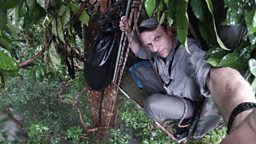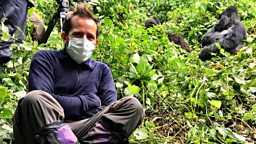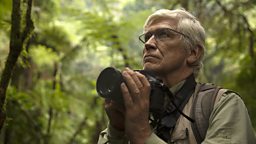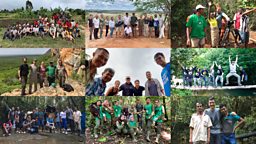Bald moves
Camera Operator James Aldred – ‘The man who climbs trees’ - on filming the world’s strangest looking primate.

The bald-headed white uakari is, without doubt, the strangest looking primate I have ever had the pleasure of filming. They are straight out of a science fiction movie.
without doubt, the strangest looking primate... straight out of a science fiction movie.James Aldred
But they are also extremely shy and mysterious, and it takes a lot of effort just to see one, let alone film it. To do so, we had to find a way to enter their world, so I rigged a filming platform 70 feet up in the branches, opposite a tree full of fruit that we hoped uakaris might be tempted to visit.
We were in a flooded region of the Amazon, where all terrestrial animals are forced up into the trees for half of each year. So my hide quickly became a menagerie of creatures. Wasps, ants, lizards, frogs and snakes all came to visit, as did the occasional monkey. One tiny squirrel monkey even sat on the hide’s roof to play peek-a-boo with me through the open side window. And watching a river dolphin swim beneath you as you perch in the branches of a tree high above, is hard to beat. The uakaris, however, were far more reluctant to reveal themselves to the camera.
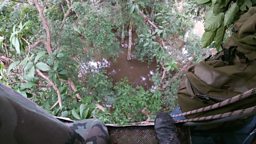
Every morning at dawn our local guides, my Producer Nikki Waldron and I would paddle silently into the flooded forest. Having reached the filming tree, I would stand up in the tiny boat and tried not to tip everyone else over the side whilst I pulled on a climbing harness and clipped into the ropes that would take me up into the canopy seven storeys above. Once up there, it was a waiting game. Time spent in the tropical canopy is always nothing short of a revelation, but it has its difficulties.
The 150 hours I spent crouched inside my small hide, yielded only five opportunities to film the uakari monkeys. But it was worth it.James Aldred
Storms are an occupational hazard in the rainforest canopy and I've had many over the years, although I have to say that the weather we experienced in the flooded forest was particularly violent and sudden. One particular storm caused an exponential amount of hassle, fear and chaos. My platform was rigged in a less than desirable tree, but the only one that had a clear view of the fruit the uakaris might visit. So when the storm hit, I had to make an escape. But the real kicker was that I had nowhere to escape to. In a flooded forest, there is nothing but deep water beneath you, so until someone gets to you in a boat there is nowhere to go. I abseiled to comparative safety but was left strung up on a rope hanging above caiman-filled water.
The 150 hours I spent crouched inside my small hide, yielded only five opportunities to film the uakari monkeys. But it was worth it. Being such little-studied and researched group of primates, I honestly felt that every shot we were able to secure was breaking new ground. And to look down the lens into the eyes of one of the world’s least-known and craziest-looking primates was a rare and privileged experience that I shall never forget.

Being up in the canopy alongside primates is often the only way to get coherent, useful footage. It was an approach that also worked well for the lar gibbons and Barbary macaques featured in Family Matters (Episode 2). Otherwise timid, tree-dwelling animals tend to be a lot more relaxed when you climb up into their world. It’s as if they don’t consider you a threat anymore. And thus, we get a window into their lives, and can unlock some of the secrets of their more intimate, and rarely filmed, natural behaviour.
timid, tree-dwelling animals tend to be a lot more relaxed when you climb up into their world.James Aldred
See behind-the-scenes of James’ experience filming uakari monkeys in Primates: Secrets of Survival at 20:15 on Sunday 26th April on 91热爆 one.
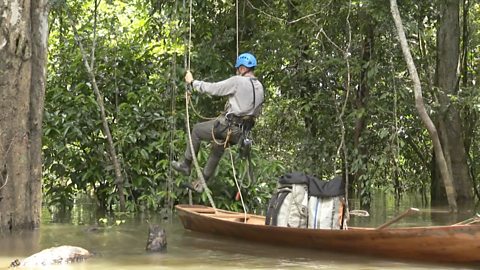
The challenges of filming in the treetops
Filming uakari in the flooded forest of the Amazon is a real challenge!
